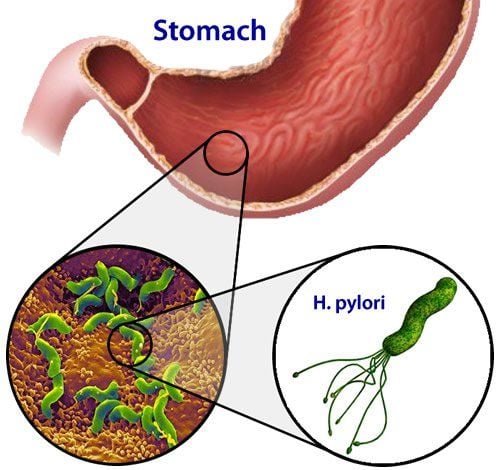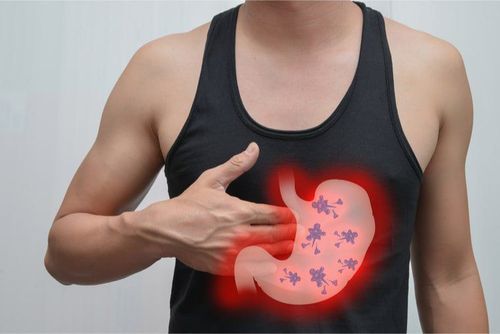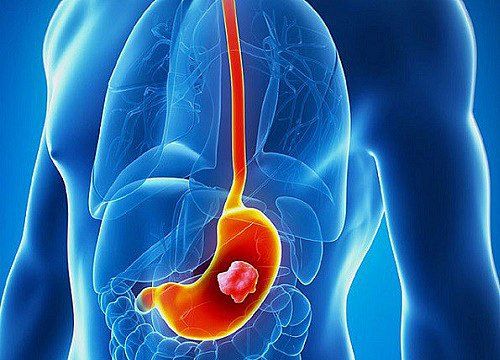Nội dung bạn đang tìm kiếm không có phiên bản tiếng Việt.
Vui lòng chọn tiếp tục để xem nội dung tiếng Anh hoặc đi đến trang chủ Tiếng Việt.
Rất xin lỗi về sự bất tiện này.

Home
Tag H. Pylori infection
Articles in H. Pylori infection

Reflux esophagitis in patients with upper GI symptoms and its association with H. Pylori . infection
Gastroesophageal reflux disease is increasingly common in Asian countries. The frequency data are mainly based on the survey of the frequency of typical reflux symptoms in the community and the frequency of reflux esophagitis (reflux esophagitis) on endoscopy. Studies noted that the incidence of reflux esophagitis in Singapore increased markedly while the prevalence of H. pylori infection gradually decreased during the 10-year follow-up period.
Xem thêm

Prevention of stomach cancer in people infected with H. pylori
Gastric carcinoma is one of the most common cancers and it can be considered as one of the major causes of death worldwide. Environmental and genetic causes may be involved and an important role in reducing the incidence of gastric carcinoma can be mentioned for prevention.
Xem thêm

Histological features of gastric cancer not due to H. pylori infection
Abbreviation H. pylori-associated gastric cancer (HpPGC) Stomach cancer not caused by H. pylori infection ( Stomach cancer not caused by H. pylori infection ) Persistent Helicobacter pylori ( H. pylori ) infection causing chronic inflammation, atrophy of the gastric mucosa and a high risk of developing gastric cancer. In recent years, awareness of H.pylori eradication treatment has increased in Japan. As H. pylori infection decreases, the incidence of gastric cancer arising from gastric mucosa that is not infected with H. pylori increases. The occurrence of gastric cancer arising in patients without H. pylori infection, although rarely reported, is a concern that needs to be addressed and should elucidate the clinical features of this disease. it.
Xem thêm

Endoscopic features of the Kyoto classification in gastric cancer risk assessment
Recent advances in endoscopic technology allow detailed visualization of the gastric mucosa. Today, endoscopy is used in the diagnosis of gastritis to determine the presence/absence of Helicobacter pylori (H. pylori) infection and to assess the risk of gastric cancer. In 2013, the Japanese Society of Gastrointestinal Endoscopy advocated the Kyoto classification, a new endoscopic classification system for gastritis.
Xem thêm

Risk assessment of Helicobacter pylori infection and gastric cancer by the Kyoto classification
Kyoto - a new endoscopic classification system for gastritis. The Kyoto classification has introduced endoscopic signs associated with H. pylori infection. The Kyoto classification score is the sum of five endoscopic findings (atrophy, intestinal metaplasia, hypertrophic folds, nodules, and diffuse erythema with or without regular arrangement of RAC collecting venules) and ranges from 0 to 8.
Xem thêm

H.pylori infection is associated with B12 deficiency and iron deficiency anemia
Although Helicobacter pylori infection is commonly associated with gastric manifestations, increasing evidence has drawn attention to its role in other pathologies. Recent studies have shown that H. pylori infection is associated with B12 deficiency and iron deficiency anemia.
Xem thêm

H.pylori infection and dermatological, autoimmune diseases
Although H. pylori infection is commonly associated with gastric manifestations, increasing evidence has drawn attention to its role in extragastric diseases. Several studies have shown an association between H. pylori infection and dermatological and autoimmune diseases.
Xem thêm

Helicobacter pylori infection and extra-gastric manifestations
Helicobacter pylori is a bacterium known to infect the gastric environment and has been associated with gastroduodenal diseases, including peptic ulcers and gastric adenocarcinoma. However, since the 1980s, the relationship between Helicobacter pylori infection and extragastric manifestations has been studied, such as inflammatory bowel disease, iron and B12 deficiency, non-alcoholic fatty liver disease, hepatocellular carcinoma, multiple sclerosis, Alzheimer's disease, Parkinson's disease, and Guillain-Barré syndrome.
Xem thêm

Prevention of gastric cancer in families with gastric oncogene E-cadherin
Gastric cancer is a multifactorial cancer that is numbered among its etiologies, both environmental and genetic. It is mainly diagnosed in South America and Southeast Asia, where it shows the highest probability rates, and it is diagnosed relatively rarely in Western and North American countries.
Xem thêm

Advances in gastric cancer prevention
Gastric cancer is a multifactorial cancer that is numbered among its etiologies, both environmental and genetic. It is mainly diagnosed in South America and Southeast Asia, where it shows the highest probability rates, and it is diagnosed relatively rarely in Western and North American countries.
Xem thêm

Clinical features of early gastric cancer in patients without Helicobacter pylori infection
Abbreviation H. pylori-associated gastric cancer (HpPGC) Stomach cancer not caused by H. pylori infection ( Stomach cancer not caused by H. pylori infection ) Persistent Helicobacter pylori ( H. pylori ) infection causing chronic inflammation, atrophy of the gastric mucosa and a high risk of developing gastric cancer. In recent years, awareness of H.pylori eradication treatment has increased in Vietnam. As H. pylori infection decreases, the incidence of gastric cancer arising from gastric mucosa that is not infected with H. pylori increases. The occurrence of gastric cancer arising in patients without H. pylori infection, although rarely reported, is a concern that needs to be addressed and should elucidate the clinical features of this disease. it.
Xem thêm













